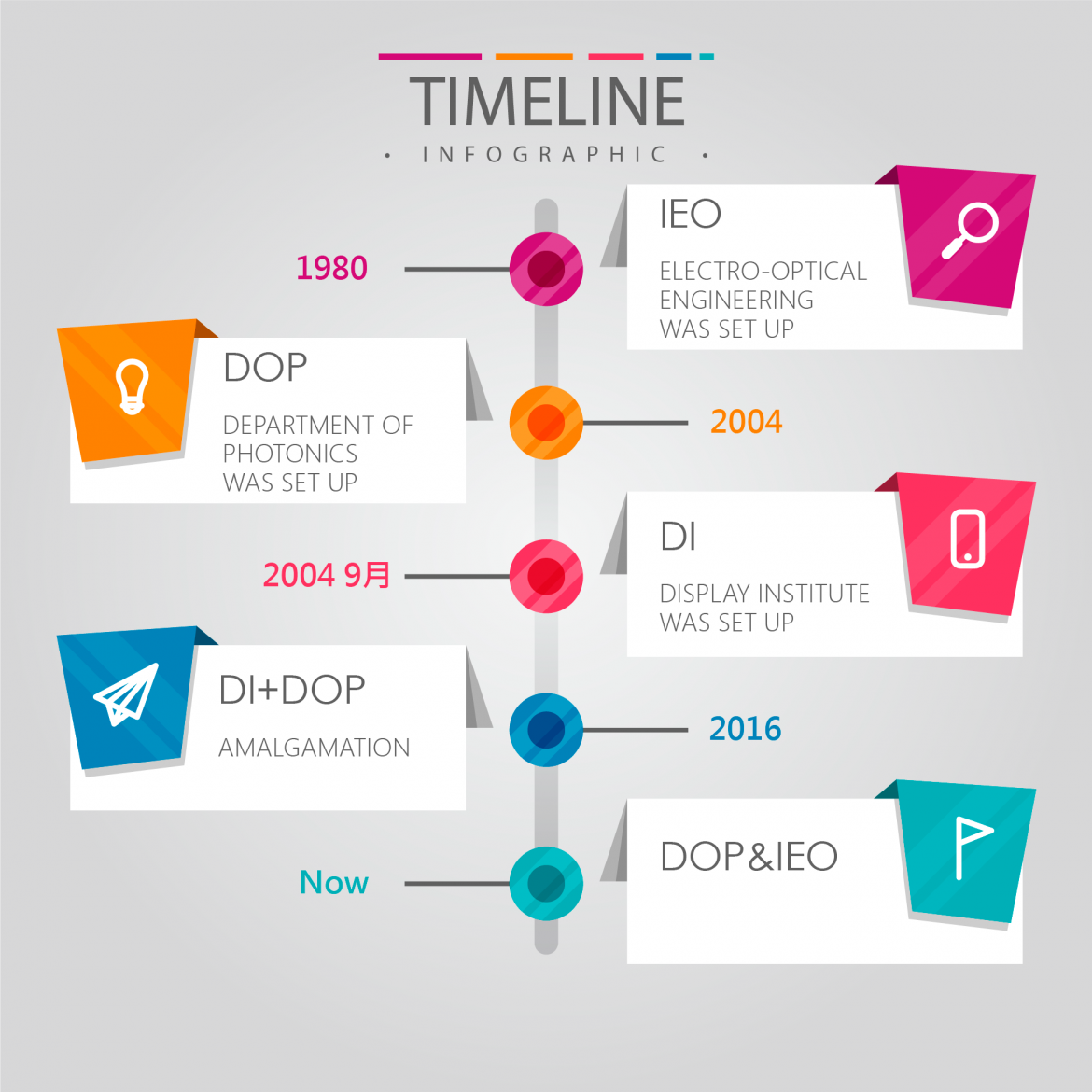HISTORY
THE DEPARTMENT OF PHOTONICS
Photonics will play a key role in providing the enabling technology for the 21st century. With this vision in mind, the department of photonics (DoP) emphasizes innovative teaching and cutting-edge research programs in photonics for the new millennium.
NCTU has a long history of academic excellence in photonic science and technology. Many pioneering photonic programs in Taiwan, including gas laser, VCSEL, holography, liquid crystal, MO storage, fiber communication, femtosecond laser and THz photonics, were initiated in NCTU.
The Department of Photonics (DoP) was established in 2004. The graduate education arms of the DoP consist of the Institute of Electro-Optical Engineering (IEO, founded in 1980) and the Display Institute (DI, established in 2004), conferring M.S. and Ph.D. degrees. Both Institutes are the first institute of its kind in Taiwan.

- Why Study Photonics?
Just listen to Einstein’s advice: “For the rest of my life, I want to reflect on what light is.” After pondering on the nature of photon, Einstein came up some inspiring ideas such as the constant speed of light, light bending in a gravitational field, and the Einstein-Podolsky-Rosen Paradox which directly inspired recent development of quantum informatics. For those interested in science and engineering, the field of photonics provides a wealth of interesting and challenging opportunity. - What are the career opportunities at DoP-NCTU?
The objective of the photonic graduate program is to create the best conditions for the transfer of knowledge and know-how in photonics. A graduate degree in photonics science and engineering will prepare you for a wide variety of satisfying career paths.
- Interdisciplinary Photonic Sciences: Design to cultivate the interdisciplinary research ability of the enrolled students.
- Nano and Energy-Oriented Green Photonics: Design to cultivate the cutting-edge R&D ability of the enrolled students.
- Photonic System Technologies (Optic Communication, Optical Data Storage and Processing, Display Technology): Design to cultivate the system integration ability of the enrolled student.
